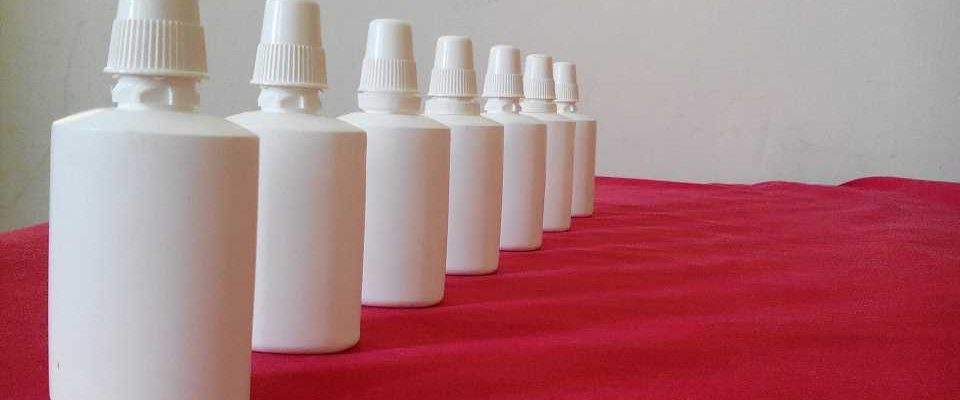Scientists develop effective intranasal mumps-based COVID-19 vaccine candidate

New research has advanced COVID-19 vaccine work in several ways: using a modified live attenuated mumps virus for delivery, showing that a more stable coronavirus spike protein stimulates a stronger immune response, and suggesting a dose up the nose has an advantage over a shot.
Based on these combined findings in rodent experiments, Ohio State University scientists envision one day incorporating a coronavirus antigen into the measles-mumps-rubella (MMR) vaccine as a way to produce COVID-19 immunity in kids.
“We were pushing to make a vaccine for infants and children with the idea that if we could incorporate the mumps COVID vaccine into the MMR vaccine, you’d have protection against four pathogens—measles, mumps, rubella and SARS-CoV-2—in a single immunization program,” said Jianrong Li, senior author of the study and a professor of virology in Ohio State’s Department of Veterinary Biosciences and Infectious Diseases Institute.
“If infants and children could develop immunity against COVID infection with the MMR vaccine, that would be great—no extra immunization needed.”
The research is published today (July 27, 2022) in Proceedings of the National Academy of Sciences.
To create the antigen that stimulates immunity in this vaccine candidate, researchers used a prefusion version of the SARS-CoV-2 spike protein—the shape it is in on the surface of the virus before the virus infects a cell. The spike was locked into this form by changing six of its amino acids to prolines, an inflexible amino acid.
Experiments comparing the six-proline protein, 6P, to a spike protein with two prolines, 2P, showed that the 6P induces significantly more neutralizing antibodies in mice and golden Syrian hamsters than the 2P version. These are the first published results showing the 6P antigen is more effective than the 2P spike protein with which the existing mRNA and adenovirus-based COVID-19 vaccines were created, the researchers said.
“The 6P antigen is about 8 1/2 times better than 2P. That’s a big deal—that’s a lot more antibody production, which may become important since it looks like the virus is going to keep on evolving,” said study co-author Mark Peeples, professor of pediatrics at Ohio State and a researcher at Nationwide Children’s Hospital in Columbus.
Li, in collaboration with Peeples and Veterinary Biosciences Professor Stefan Niewiesk, previously led development of a measles-based COVID-19 vaccine candidate, but found that the mumps virus genome is even more amenable than measles to insertion of the spike protein gene. The study used a mumps vaccine strain that has been a component of the current MMR vaccine used in children since the 1960s. Once the 6P spike protein gene is inserted into the genome, the recombinant mumps virus replicates more slowly but is genetically stable and grows well in a World Health Organization-approved cell line for vaccine production.
In animals, the live attenuated mumps vaccine modified in this way generated high levels of the 6P protein antigen, which triggered a strong immune response.
Researchers compared the 6P spike protein vaccine candidate’s effectiveness to a 2P version in mumps, and to mumps without the spike protein, in mice engineered to be highly susceptible to mumps infection and in golden Syrian hamsters, a standard animal model for SARS-CoV-2 studies. In all experiments, the 6P vaccine produced the best results: higher concentrations of neutralizing antibodies after vaccination, and after introduction of a SARS-CoV-2 virus challenge a few weeks later, protection from lung damage and significantly fewer viral particles in the lungs and nasal cavity.
“We didn’t test the Omicron variant for this paper, but the 6P vaccine induced neutralizing antibodies and T cell activity against several variants of concern and offered complete protection from disease caused by the parent SARS-CoV-2 virus and the delta variant,” Li said. “That’s very important and suggests that if we use the 6P spike protein for vaccine protection in the future, we can enhance a vaccine’s ability to protect humans.”
In addition, the Li laboratory developed a rapid recombination system that enables the insertion of any antigen into a mumps or measles virus in a week. “With this technique, the MMR vaccine can be rapidly updated to protect against new SARS-CoV-2 variants as they emerge,” said study first author Yuexiu Zhang, a major contributor to this technology in Li’s lab.
Researchers vaccinated study animals by both injections and by drops into the nose, an attractive needle-free option that—the results suggested—provides superior protection against the coronavirus by inducing not only system-wide antibodies, but a broad response of specialized antibodies called IgA on mucosal surfaces of the airways as well, Li said.
“Like most of the injected vaccines, current mRNA and adenovirus-based COVID-19 vaccines primarily induce antibodies in the bloodstream. Unfortunately, antibodies in the bloodstream do not protect the mucosal site of the airways very well, which is the initial site of infection with SARS-CoV-2. In contrast to injected vaccines, our new intranasal vaccine may be the next generation of COVID-19 vaccine because it can induce robust IgA, which directly neutralizes the SARS-CoV-2 in the nose and airways tissues,” said co-author Prosper Boyaka, professor of mucosal immunology and chair of veterinary biosciences at Ohio State.
Added Peeples, “Having those antibodies on the surface of the airways could be a real advantage compared to hoping that some of the antibodies in the bloodstream will end up in the respiratory tract.”
The study findings also suggest that existing immunity to mumps from vaccination or previous infection may slow the initial stimulation of antibodies by the mumps-based COVID-19 vaccine, but does not prevent a strong, protective antibody response.
“That finding suggests this candidate can be used not only in infants, but also in adults who have mumps antibodies,” Li said.
Source: Read Full Article
